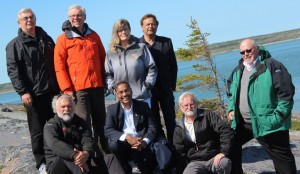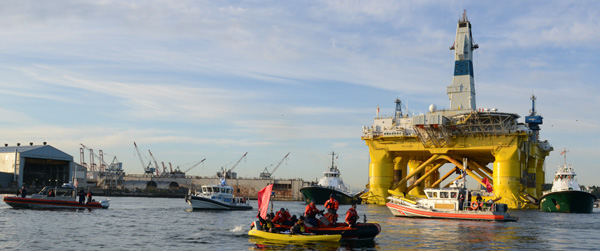Churchill Marine Observatory: New research into Arctic oil spills
Churchill Marine Observatory research will be help in event of Alaska Arctic off-shore oil spill
A new $32 million research facility – Churchill Marine Observatory – on the edge of Hudson Bay will soon begin studying the impacts of potential Arctic oil spills.
The recent transportation of two Shell drilling platforms up the West Coast has focused public attention on Arctic oil and gas production and raised concerns about spills and releases into the fragile Arctic ecosystems.
The Churchill Marine Observatory, the only facility of its kind in the circumpolar Arctic, will be located along the west coast of Hudson Bay adjacent to Canada’s only arctic deep-water port at Churchill.
Research teams working at the marine observatory and in their resident labs will develop ways of detecting oil in ice-covered waters, study its impact on the ecosystem, and develop technologies for cleaning up arctic waters in case of a spill, according to a release from the University of Manitoba, one of the partners in the project.

BACK ROW (L-R): DAVID BARNARD; GREG SELINGER, MANITOBA PREMIER; SHELLY GLOVER, FEDERAL MINISTER OF CANADIAN HERITAGE AND OFFICIAL LANGUAGES; MIKE SPENCE, CHURCHILL MAYOR; FRONT ROW: DAVID BARBER; DIGVIR JAYAS, VICE-PRESIDENT (RESEARCH AND INTERNATIONAL), UNIVERSITY OF MANITOBA; GERALD FARTHING, DEPUTY MINISTER EDUCATION; NORMAN HALDEN, DEAN OF THE CLAYTON H. RIDDELL FACULTY OF ENVIRONMENT, EARTH AND RESOURCES
“Arctic system science and climate change is one of the University of Manitoba’s Signature Areas of research excellence, and the Churchill Marine Observatory will enable our scientists, working in collaboration with partners around the world, to push forward knowledge and understanding in this important field,” said David Barnard, president and vice-chancellor, University of Manitoba.
“Their research will be crucial to mitigating and adapting to the effects of a changing climate on Canada’s Arctic and the world.”
The University of Calgary, a partner in the project, is contributing expertise in bioremediation, sea ice remote sensing, and in understanding the nature of CO2 exchange under extreme arctic conditions.
“The broad scientific perspectives, as well as those from industry that will come together at the Churchill Marine Observatory, will guide the decisions about how best to manage our energy resources while protecting sensitive ecosystems,” said Ed McCauley, vice-president (research).
Hubert, also a Campus Alberta Innovation Program Chair in Geomicrobiology, will lead the research team studying hydrocarbon biodegradation. His team will be looking for microbial communities capable of breaking down oil compounds by using the two sea ice tanks at the observatory to simulate real world conditions of an oil spill in a controlled arctic environment.
“Bioremediation in the cold arctic and in the presence of sea ice remains poorly understood,” Hubert says. “By developing a better understanding of how arctic microbes will be mobilized in the event of a spill we can better model and map what will happen and what our response should be, should an accidental spill ever occur.”
Researchers at the Churchill Marine Observatory will use a purpose-built Oil in Sea Ice Mesocosm designed to support detailed investigations of oil, and other transportation related contaminants, in Arctic sea ice.These small scale OSIM studies will then be upscaled to the entire Arctic using a “highly coupled” Environmental Observing system, says David Barber, Canada Research Chair in Arctic System Science.
“Taken as an amalgam the Churchill Marine Observatory will provide new knowledge and environmental technologies required for the detection, impacts, and mitigation of oil/contaminant spills in sea ice; directly benefitting policy development and technological innovation in Manitoba, Nunavut, Canada and indeed the circumpolar world,” said Barber.
John Yackel, UofC geography dept. head, will lead the sea ice remote sensing research, using satellite-microwave technologies to look at what snow-covered sea ice looks like without an oil spill on it, and see how signals change if there is a spill on the ice.
Brent Else, assistant geography professor, will research the impact of oil spills on ecosystem function: “We don’t know what role sea ice plays in carbon dioxide absorption. The typical approach is that once you get an ice layer, it stops any CO2 exchange with the ocean, but there are a lot of questions in that area, and some of the challenges are similar to oil spill challenges.”
The Churchill Marine Observatory is funded by the Canada Foundation for Innovation and the Province of Manitoba.







